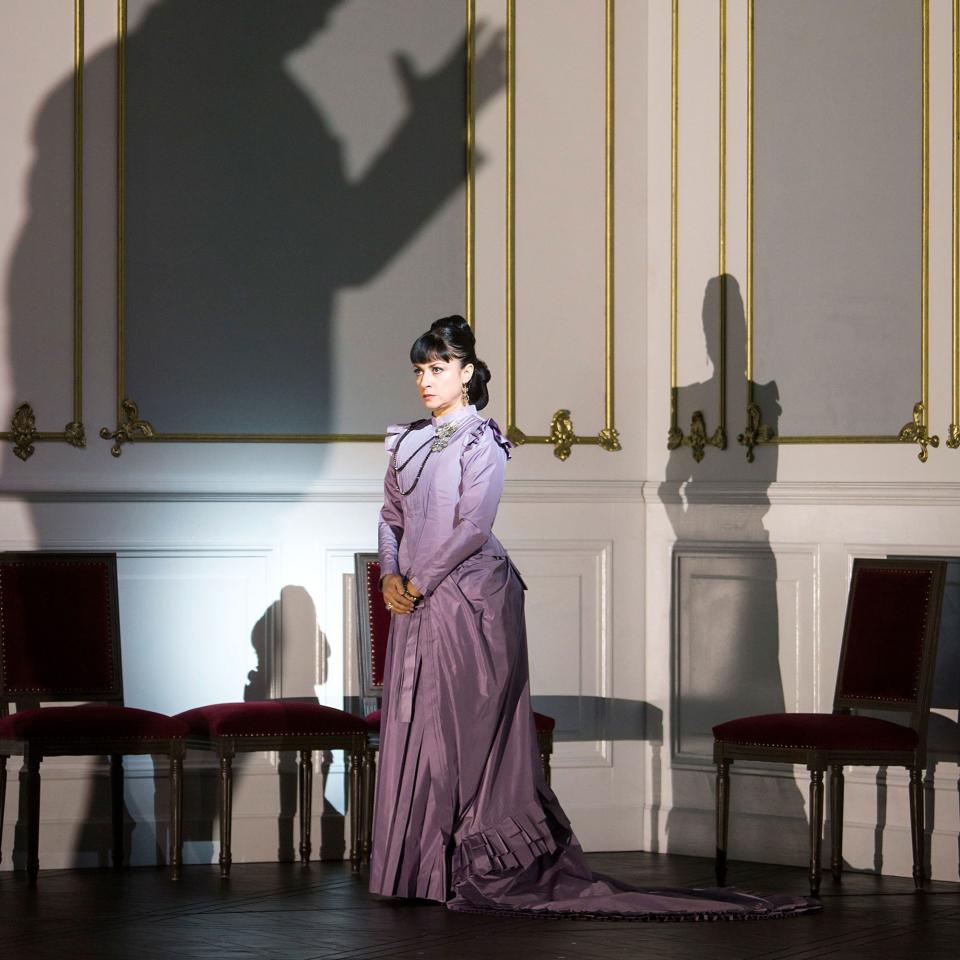Alessandra Facchinetti’s Incredibly Lavish Costumes for Verdi’s Don Carlo Are Operatic Couture
Every night, for weeks and weeks and weeks, Alessandra Facchinetti, the Italian designer and creative consultant who has worked her magic at Gucci, Valentino, and Tods, has been listening to Giuseppe Verdi’s Don Carlo, about the dying days of a Spanish monarchy. All in the aid of work, just to be clear, lest you start worrying for her relationship with her neighbors in Milan. Facchinetti has created some 90 or so incredible and incredibly intricate costumes for a new production of the Italian composer’s five-act 1867 grand opera which will open Saturday at the Theater St. Gallen in St. Gallen, Switzerland. There’s something serendipitous about it being performed in the town, given her own fashion credentials; it’s also the home to the century-old lace company Forster Rohner, which has spun that most delicate of fabrics for the likes of Dior, Balenciaga, and Chanel.
Director Nicola Berloffa wanted someone who could create decadent and sumptuous costuming for his version of Don Carlo, and he came to the right person; the work of Alessandra Facchinetti has always had historical echoes while staying true to women in the 21st century. And, at our first meeting years ago, she impressed me as one of the very few women who could convincingly marry a Comme des Garçons military-inspired coat with 19th-century English estate chandelier earrings—and wear both like she’d casually paired a hoodie with headphones. Over the phone from the Swiss town where’s she been staying during the rehearsals—“It’s like a mini Paris,” she says, “with the elegance of the architecture—but you’re also surrounded by nature”—she spoke about how the project came into being, the psychology of costuming, and why this task was often alike to designing haute couture.
How did the project come about?
It started a year ago when I met Nicola [the director] and he asked me to do it. It’s a big thing for the theater to be doing this production, but it is also something that I’ve always wanted to do, in the right moment, and when I felt I had the maturity to do it. It’s almost like couture work, the level of execution is very close to that.
You did couture for Valentino, but how does it differ, given you’re designing for the stage and not life?
The thing I really enjoyed about it is that it is very real. It’s real in terms of the relationships you forge with the cast and the director and the crew, and there’s also the psychological aspect to thinking about the characters you’re dressing; your own psychology in thinking about them and their individual psychologies. The mental process involved is incredible. I love fashion, and want to go on with it, I don’t want to leave it at all!
But I would like to do another opera. It feels like the right time to make my experience of work a bit more flexible, push myself into new ventures and challenges. From an emotional point of view, the appeal of that is very strong. Doing this project . . . it makes me think a lot about what happens when do you something with love, and when it will last longer than the few months that fashion does nowadays. There’s a very human feeling here . . . . The thing with fashion right now, and I’m not a nostalgic person at all, is that I’m thinking, Where is the dream, where is the fantasy? All we seem to do in fashion right now is come up with something that’s only for now.
How did you do your research for the costuming? What were you looking at?
The opera deals with the end of the monarchy, so life was at its most beautiful and most decadent, very extreme, but also it was very depressing time. I studied a lot. I went into all of Verdi’s history, how he built this opera, which is one where you can understand the story without the words, just through the power of the music. As I do with fashion, there were a lot of art references, like portraiture by Sargent, and movie references, like Visconti—even the lighting of the opera reminds me a bit of Visconti, and Nicola loved it. Like I said, I studied the psychological side of the characters, in particular the colors, and how they could reflect the characters. That was the first thing I showed the director.
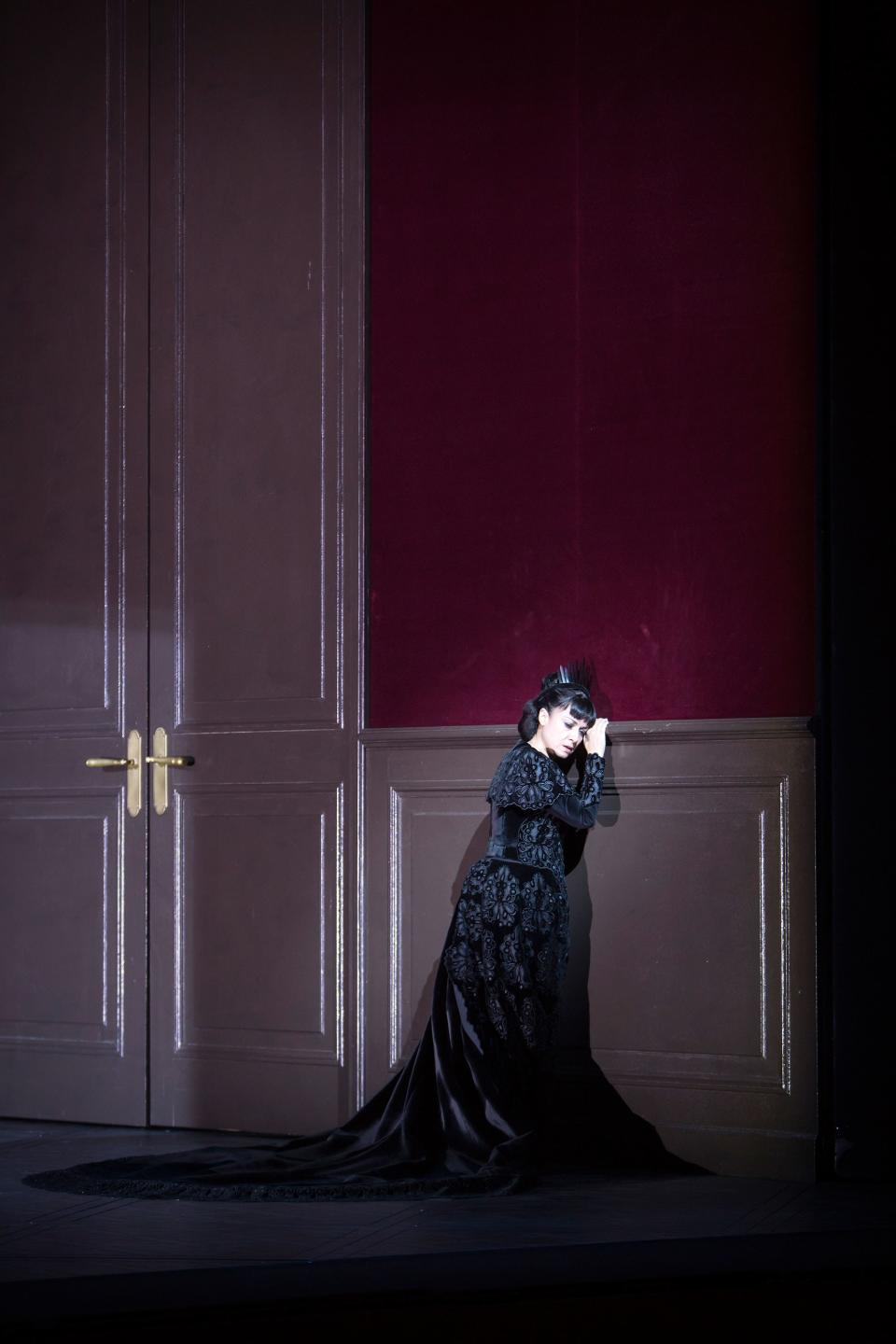
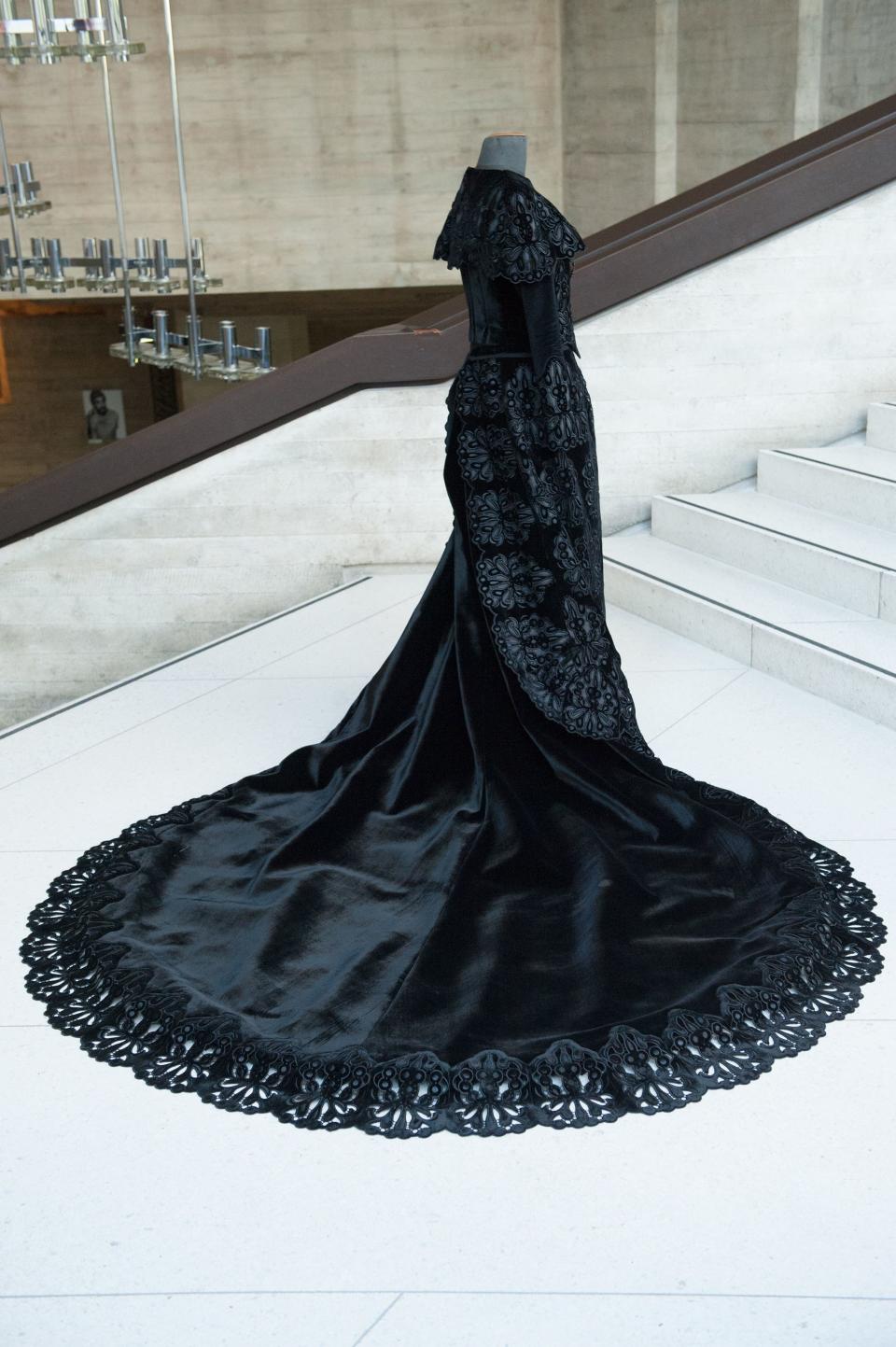
Can you tell me more about that?
Electric blue is the strongest color, and that’s because it’s worn by Princess Eboli, who is a troublemaker; she wants to damage the Queen, and disrupt the harmony of the family. The rest of the colors are deep—black, brown, prune, but very rich—and some moire, which is quite decadent but not rich in the traditional way. There are a little military tones, and some French, since the Queen came from France; there is a very French dress, in lilac, which I did because she is losing the wealth of her life, and because her heart is still in France. And there are no crowns; they have lost some of the traditional regal embellishments because the monarchy is losing power. It’s a very dark moment for them.
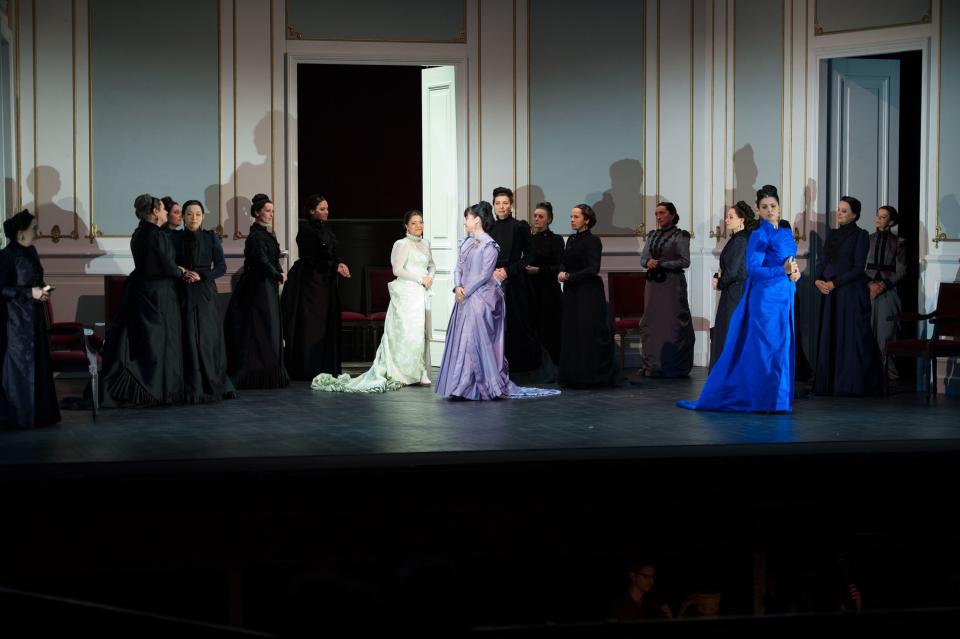
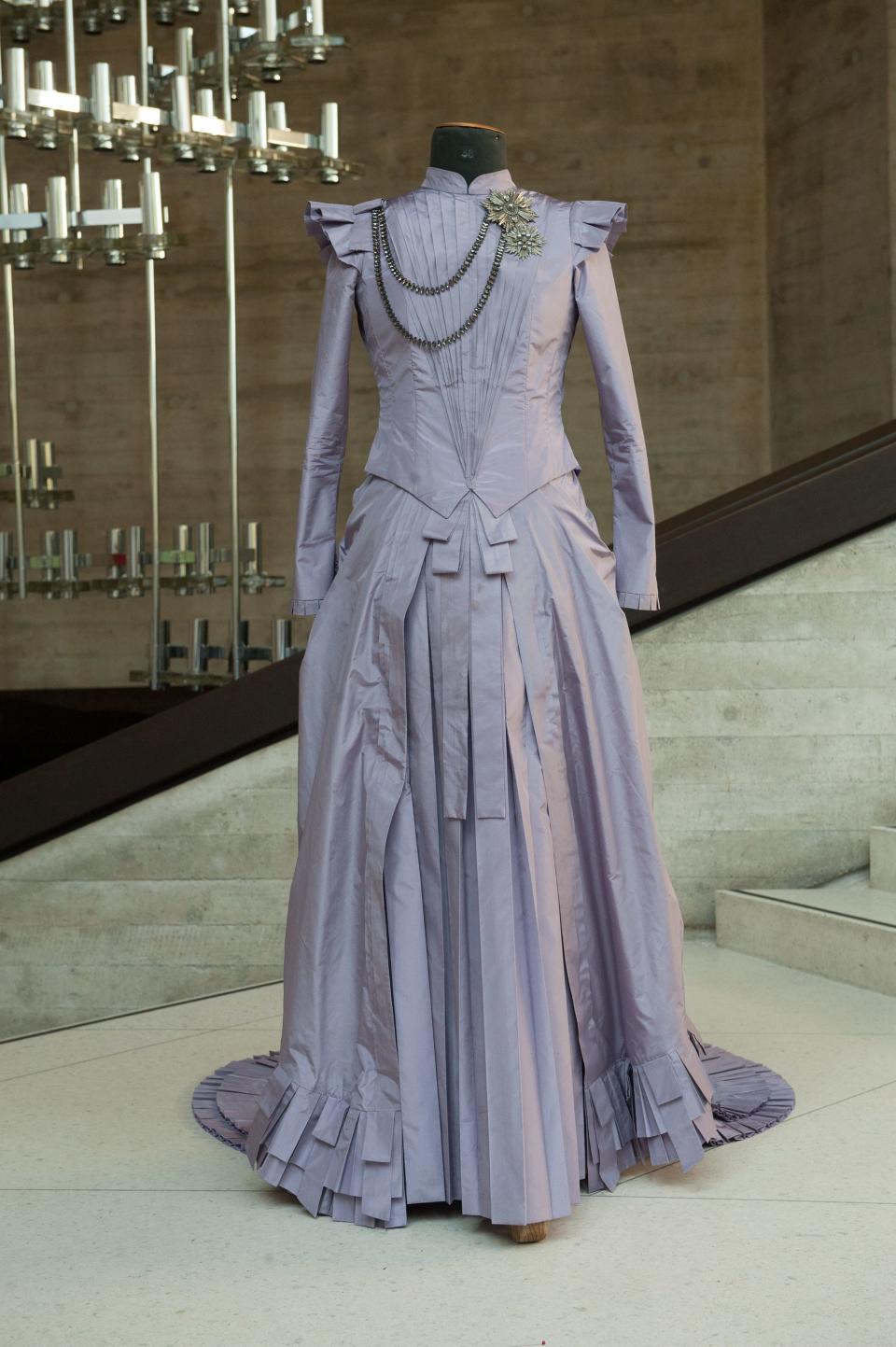
How does it differ when you’re designing pieces for people who have to sing, to perform?
It’s actually a very intense and private experience; you have to work around the body and movements of all the performers. You develop very close relationships with them, by which I mean both the singers and the characters. There were a lot of go-rounds to make it perfect for him or her; how much volume is necessary for the performance, how they feel about and in the costume, how they move. Everything is calculated. One year to do all this was just enough; any less would have been not nearly enough.
